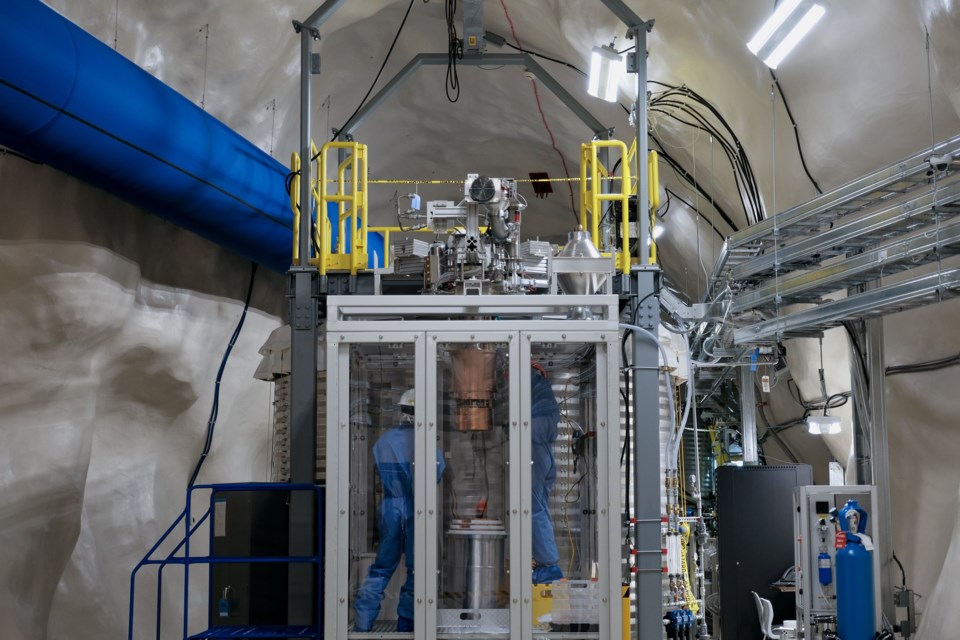SNOLAB, Sudbury’s underground science research facility, is partnering two other organizations to study how radiation impacts quantum computing.
Researchers at SNOLAB, located two kilometres below the surface at Creighton Mine, are teaming up with researchers from the Institute for Quantum Computing (IQC) at the University of Waterloo and Chalmers University of Technology in Sweden on the work.
“SNOLAB maintains the lowest muon flux in the world and advanced cryogenics testing capabilities, making it an ideal place to conduct valuable research on quantum technologies,” Dr. Jeter Hall, director of research at SNOLAB, said in a news release. “In addition, SNOLAB’s next generation dark matter experiments promise to be early adopters of quantum technology, so we have multiple, vested interests in the outcome of this project.”
Titled “Advanced Characterization and Mitigation of Qubit Decoherence in a Deep Underground Environment,” the research is sponsored by the Army Research Office, a directorate of the U.S Combat Capabilities Development Command’s Army Research Laboratory.
The grant was to Dr. Chris Wilson, a faculty member at IQC and professor in Waterloo’s Department of Electrical and Computer Engineering, alongside SNOLAB director Hall, and Dr. Per Delsing, a professor at Chalmers University and director of the Wallenberg Center for Quantum Technology.
“By partnering with the experts in dark matter and cosmic radiation at SNOLAB, we can bring together their expertise and strengths with the superconducting qubit skills we have at IQC and Chalmers,” said Wilson. “We’re also able to connect to the quantum communities and funding within the United States while showcasing the unique facilities and capabilities in Canada’s scientific ecosystem.”
But what does it all mean?
Like classic computers use something called a “bit” to describe a unit of digital information, quantum computing uses something similar, a “qubit” or “quantum bit.” Digital bits and quantum qubits don’t behave the same way though, and qubits are susceptible to error when hit by high energy particles, such as cosmic rays or radioactivity.
“This results in an error hotspot, which spreads out to neighbouring qubits, and has been seen happening at a rate of about once every 10 seconds, setting an upper limit on quantum calculation time,” SNOLAB said in a news release.
While digital computers can use design rules and error correction to account for these high energy particles, the same is not true in quantum computing. Sometimes all the qubits will error in response to radiation, creating a challenge known as “decoherence,” where the qubit loses its quantum state.
“With this project, we hope to start understanding what’s going on with the qubit decoherence in relation to cosmic rays, and then start understanding how the radiation affects the qubits in more controlled ways,” Wilson said.
Using the Canadian Shield to create a low background environment, SNOLAB’s unique environment allows the research collaboration to isolate the qubits from the cosmic radiation at the surface.
“High-quality superconducting qubits will be manufactured in the fabrication facilities at Chalmers University, and then tested at the surface in both Sweden and Waterloo, as well as underground at SNOLAB to study the differences in each environment,” SNOLAB said.
“We are super excited about this project, since it addresses the very important issue of how cosmic radiation affects quantum bits and quantum processors,” said Delsing, the researcher from Chalmers. “Getting access to the underground facility at SNOLAB is crucial to understand how the effects of cosmic radiation can be mitigated.”
